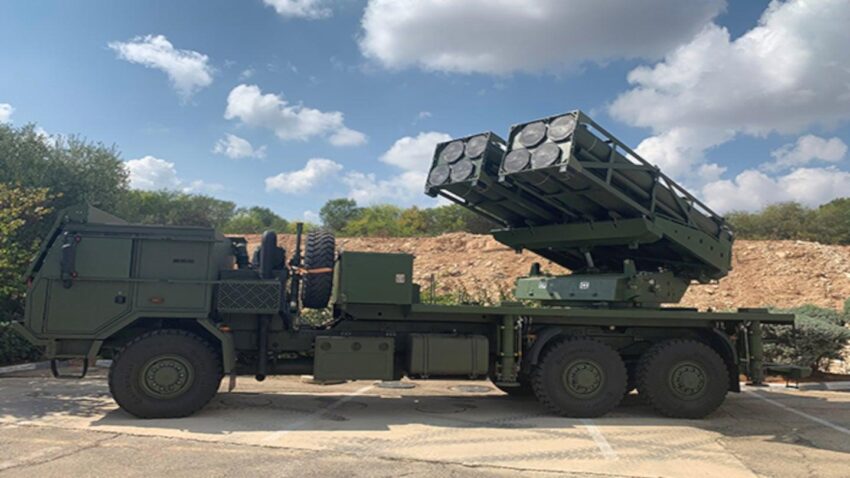PULS Rocket Artillery Systems Approved for German Army
The German Parliament has officially approved a significant investment of 65 million euros (approximately $68 million) for the purchase of five Elbit-produced PULS rocket artillery systems. This decision is part of a broader defense budget, which recently reached a record high of 20 billion euros ($20.7 billion), underscoring Germany’s commitment to strengthening its military capabilities.
This approval marks a decisive shift in Germany’s artillery strategy, particularly after speculation surrounding the need to replace the five MARS II Multiple Launch Rocket Systems (MLRS) that were previously sent to Ukraine. The MARS II, a European variant of Lockheed Martin’s tracked M270A1 MLRS, still sees Germany retaining around 35 units, highlighting the necessity for a more robust artillery system.
Competing Offers and Strategic Partnerships
In the competitive landscape of artillery procurement, Lockheed Martin and Rheinmetall have introduced an alternative proposal to replace the MARS II. Their offering, the Global Mobile Artillery Rocket System (GMARS), integrates Rheinmetall’s HX 8×8 truck with Lockheed’s two-pod multiple rocket launcher. This system is designed to utilize advanced weaponry, including the Precision Strike Missile and the Army Tactical Missile System.
However, reports from Defense News suggest that this offer was not advanced enough for immediate consideration. A spokesperson from the German Ministry of Defense noted that a usable prototype was lacking, which ultimately influenced the decision to proceed with the PULS systems instead.
Collaboration with the Netherlands
The acquisition of the PULS systems will take place through a partnership with the Netherlands, which has already placed an order for 20 units amounting to $305 million. This collaboration is expected to enhance operational synergy, as the Dutch Army is closely integrated with German military structures.
According to Defense News, utilizing a shared weapon system like the PULS is anticipated to foster further military cooperation between the two nations, reinforcing their strategic alliance within NATO frameworks.
Procurement Details and Future Integration
The procurement process for the PULS systems will be facilitated through a contractual option established between the Dutch and Israeli governments. This agreement will not only include the acquisition of the launch systems but also the integration of German-specific command and communication infrastructure, ensuring that the systems operate seamlessly within the German military framework.
Reports indicate that the German variant of the PULS systems will be integrated onto 8×8 IVECO Trakker platforms, with the initial units expected to be delivered by 2025, marking a significant milestone in Germany’s artillery modernization efforts.
Capabilities and Munitions
The PULS system is designed for versatility, capable of being mounted on both tracked and wheeled platforms, and supports a wide range of munitions with an impressive operational range of up to 300 kilometers (approximately 186 miles). This adaptability allows for the incorporation of national fire control systems, enabling Germany and its partners to utilize munitions tailored to their strategic needs.
Elbit has confirmed that the PULS system is compatible with Lockheed’s GMLRS munition, which is widely available among NATO allies. However, the use of this particular munition will necessitate political approval from the United States, with Germany actively coordinating with Washington to secure this capability.
Future Enhancements and Joint Ventures
Looking ahead, MBDA has proposed integrating a Joint Fire Support Missile into the PULS systems, significantly extending the range to 499 kilometers (310 miles). This enhancement could vastly improve Germany’s strike capabilities in future military engagements.
Additionally, a collaborative effort between KMW and Nexter Defense Systems is exploring the option to equip the PULS with Kongsberg’s Naval Strike Missile, which boasts a range of 250 kilometers (155 miles). Such advancements could position the PULS as a formidable asset in Germany’s artillery arsenal.







